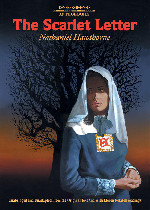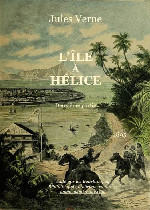
The Scarlet Letter: A Romance, an 1850 novel, is a work of historical fiction written by American author Nathaniel Hawthorne. It is considered his "masterwork". Set in 17th-century Puritan Massachusetts Bay Colony, during the years 1642 to 1649, it tells the story of Hester Prynne, who conceives a daughter through an affair and struggles to create a new life of repentance and dignity. Throughout the book, Hawthorne explores themes of legalism, sin, and guilt.

L'Île à hélice, sous-titré Les Milliardaires ridicules, est un roman de science-fiction de Jules Verne, paru en 1895. L'idée d'une île véhiculée est donnée à Jules Verne par Jean Macé, alors que tous deux observaient sur le pont des Arts un bateau-mouche. L'œuvre est publiée d'abord dans le Magasin d'éducation et de récréation du 1er janvier au 15 décembre 1895, puis en volume dès le 21 novembre de la même année chez Hetzel.